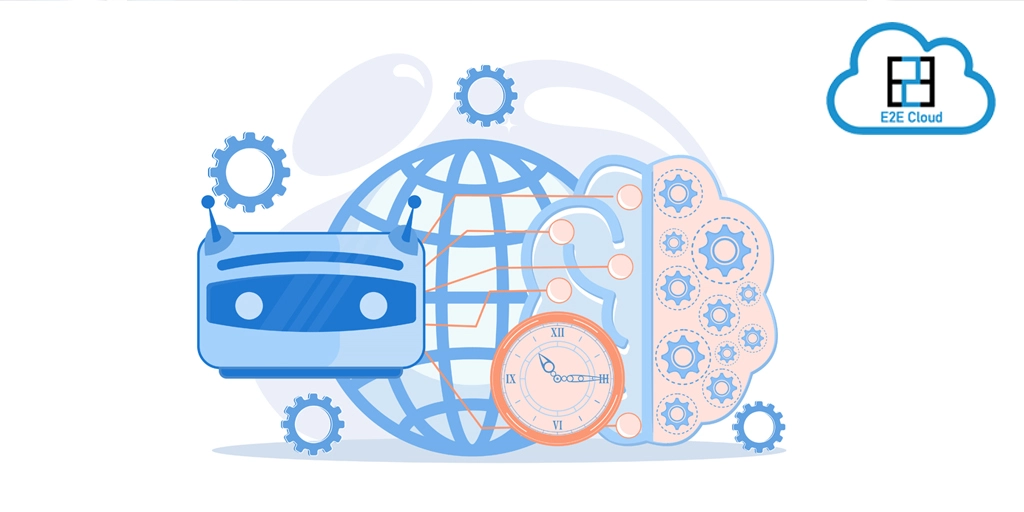Since the industrial revolution, we have observed how machinery is replacing humans in endless operational activities. Nowadays, we have robots vacuuming houses or even challenging (and even debunking) the chess masters. On the other hand, these changes have generated new demands in the market dependent on the human mind, and both machines and robots continue to depend on humans to keep up with everyone’s needs, whether to give the first commands or to “refine” the final results.
History of AI writing Tools
AI writing tools have been around since the early 1980s. The first AI writing tool was the "Story Generator" computer program, developed at the Massachusetts Institute of Technology in 1983. It was designed to generate stories from a set of user-defined parameters. The program was not particularly successful, as it had difficulty generating stories that were both internally consistent and meaningful.
In the 1990s, AI writing tools began to make more significant strides. The most notable example of this was the "WordSmith" program, developed by Microsoft in 1995. WordSmith was one of the first AI writing tools to use natural language processing, allowing it to generate more complex stories than its predecessors. WordSmith was also the first AI writing tool to be commercially available. Since then, AI writing tools have continued to become more sophisticated.
In the late 2000s, AI writing tools like Autocrit and Grammarly began to be used by professional writers, allowing them to produce content quickly and accurately. In recent years, AI writing tools have become even more advanced, with the emergence of AI-powered content creation platforms like Quill and Wordsmith. These tools use natural language processing to generate written content based on user inputs.
Why an AI writing tool?
AI has excelled at an extraordinary pace over the past few years. Today, these incredibly complex algorithms are capable of creating award-winning art pieces, penning scripts that can be converted into cinematic pieces and in the latest step that has dazzled people in tech and media industries-mimic writing at a level so convincing that it’s impossible to tell whether the words were put together by a human or by a robot. It is popularly used to improve the quality of written text. AI-driven writing assistants can aid writers in identifying grammatical and spelling errors , check for accuracy and suggest better words and phrases. AI can also analyze text for sentiment and provide feedback for writing that is too wordy, complicated, or unclear. Additionally, AI can help writers discover and incorporate new sources, research topics, and optimize for Search Engines.
The introduction of AI into writing has replaced the labor intensive ways of researching and instead it is assisting the writers to amalgamate optimal information into appropriate usage of words. Basically, what it does is elaborate a content worth to the context and adjust its comprehension opacity to a standard level which means not making the content verbose.
AI writing tools can simplify topics like quantum computing. It allows users to make corrections and is trained to decline inappropriate requests. It may occasionally generate incorrect information or produce harmful instructions or biased content.It is a new chatbot which can assist you by t interacting with it. The first AI writing tool can be traced back to Stanford’s spell check software in the early 70s. AI writing assistants have come a long way since then. Today, online writing assisting tools use AI, predictive analytics and NLP to generate new ideas, check for the language tone and structure of stories.
The experts spoke about how specialists use AI to make the writing engaging and in tune with the brand voice. According to them, grammar models can be trained on a huge dataset of well-edited content, and deep learning,allowing the model to pick up the nuts & bolts of syntax without a prescriptive or rule-based training.
In this world of physics, AI helped a lot in optimizing quantum code to create a wormhole in quantum computing. AI is scientifically equipped and can calculate the rate of scientific discovery in terms of how well-structured it is for our discoveries.
The goal of AI is to replicate the behavior and capabilities of human intelligence. This means that AI has been designed to mimic human behavior, including the way that humans write. AI can be used to generate new text that is similar in style to a human-written piece of work. This can be accomplished through natural language processing (NLP) and machine learning algorithms that analyze existing text and learn the patterns and characteristics of how humans write. AI can use this information to generate new text that is similar in style and structure to the original.
In the AI generated text, the robot delivers insights according to your ideas. You will give the “final touch,” literally human to the content, capable of arousing the desired emotions of an audience (the readers). Despite AI being able to interpret and reproduce many human behaviors, it will be challenging to comprehend our emotions, right?
Open source tools that can be deployed by launching NVIDIA A100 80GB Cloud GPU on E2E Cloud:
- Bibisco: Bibisco is an application designed to assist you in writing stories, mainly novels. Where it shines is in character creation. Bibisco asks you a series of questions about each character in your story. The questions will help you create a solid idea of what your character looks like, what their motives are and what their background is. It also has storage for images that helps you create a mental picture of your characters. Bibisco also comes with an interesting analysis feature that allows you to see at a glance what characters and what locations appeared in different chapters. It includes a decent look text editor that has basic formatting features.
GitHub source: https://github.com/andreafeccomandi/bibisco/blob/master/bibisco/app/package.json
- Manuskript: Manuskript is another novel creation tool. This application focuses on outlining. By looking at the detailed outline tool, you can see what stage each chapter is at and what characters are involved. You can also easily rearrange chapters. It uses the snowflake method to help you build your novel. Manuskript includes a frequency analyzer, so you can see which words or phrases you repeat and how often. They even included a distraction free writing mode. Manuskript is released under GPL v3. It is available for Linux, Windows, and Mac. It’s worth noting that it is still a pre-release version and in early stages of its development and does not have a stable release yet.
GitHub source: https://github.com/olivierkes/manuskript
- Espanso: If you are looking to generate crunchy texts quicker, you might want to use an open source text expander tool like Espanso. It works totally offline and you can create your own custom keywords to expand texts that you would use frequently which can also speed up your writing tasks.
GitHub source: https://github.com/GitbookIO/gitbook
- Gitbook: GitBook is a service mainly used for technical writing, but it could work for a fiction writer. GitBook makes use of the git version control system to track changes in the document you are writing. It also enables several users to collaborate on a book.
GitHub source: https://github.com/GitbookIO/gitbook
- Kitscenarist: If you’re into screenwriting (or scriptwriting), KIT Scenarist is a full-fledged solution for casual and professional use. It offers a lot of features that includes the ability to create/manage cards, get statistics about your project, and organize all your research materials to comfortably work on your script with an easy-to-use GUI (Graphical User Interface).
GitHub source: https://github.com/dimkanovikov/KITScenarist
- Scribus: Scribus is a free and open source desktop publishing application. It's not designed to help you write the next big novel, but you can use Scribus to layout the finished book or work on publishing a print-ready magazine. It has support for powerful vector drawing tools, support for a huge number of file types via import/export filters, emulation of color blindness or the rendering of markup languages like LaTeX or Lilypond. Scribus can run on Linux, Mac OS X and Windows. It is released under GPL.
GitHub source: https://github.com/scribusproject/scribus
- Markdown: Markdown is more than a tool. It is also a formatting syntax. This means that you can write your stories in a plain text editor and then convert it to any document format or just use it to convert text to HTML. All you have to do is add a series of symbols throughout the document. This is great because it prevents you from being locked into one program or file format only to see it die. In order to use Markdown, you typically need to use a text editor that supports Markdown.
GitHub source: https://github.com/adam-p/markdown-here/wiki/Markdown-Cheatsheet
- AsciiDoc: It is another document formatting syntax. AsciiDoc has support for several options, such as footnotes, tables, cross-references, embedded YouTube videos, and more. It can be used in the creation of notes, documentation, articles, books, e-books, slideshows, web pages, man pages, and blogs. AsciiDoc files can be converted to HTML, PDF, EPUB, and man pages. It is released under GPL v2.
GitHub source: https://github.com/asciidoctor/asciidoctor
How can you launch NVIDIA A100 80GB on E2E Cloud?
- Login to Myaccount
- Go to Compute> GPU> NVIDIA- A100 80GB
- Click on “Create” and choose your plan

- Choose your required security, backup and network settings and click on “Create My Node”

- The launched plan will appear in your dashboard once it starts running.

AI-written content also often lacks authenticity and a personal narrative, and it can’t understand complex human sentiments, which makes it hard to emulate human writing. Will we get to a point where this isn’t true anymore? Honestly, probably sooner than we would all like to admit. But we’re not there yet.
You can launch A-100 80GB Cloud GPU from our Myaccount. portal & deploy any open source AI writing tool for your content creation needs.
E2E Networks is the leading accelerated cloud which provides the best GPU at affordable price. You can contact us for your free trial: sales@e2enetworks.com '


.png)







